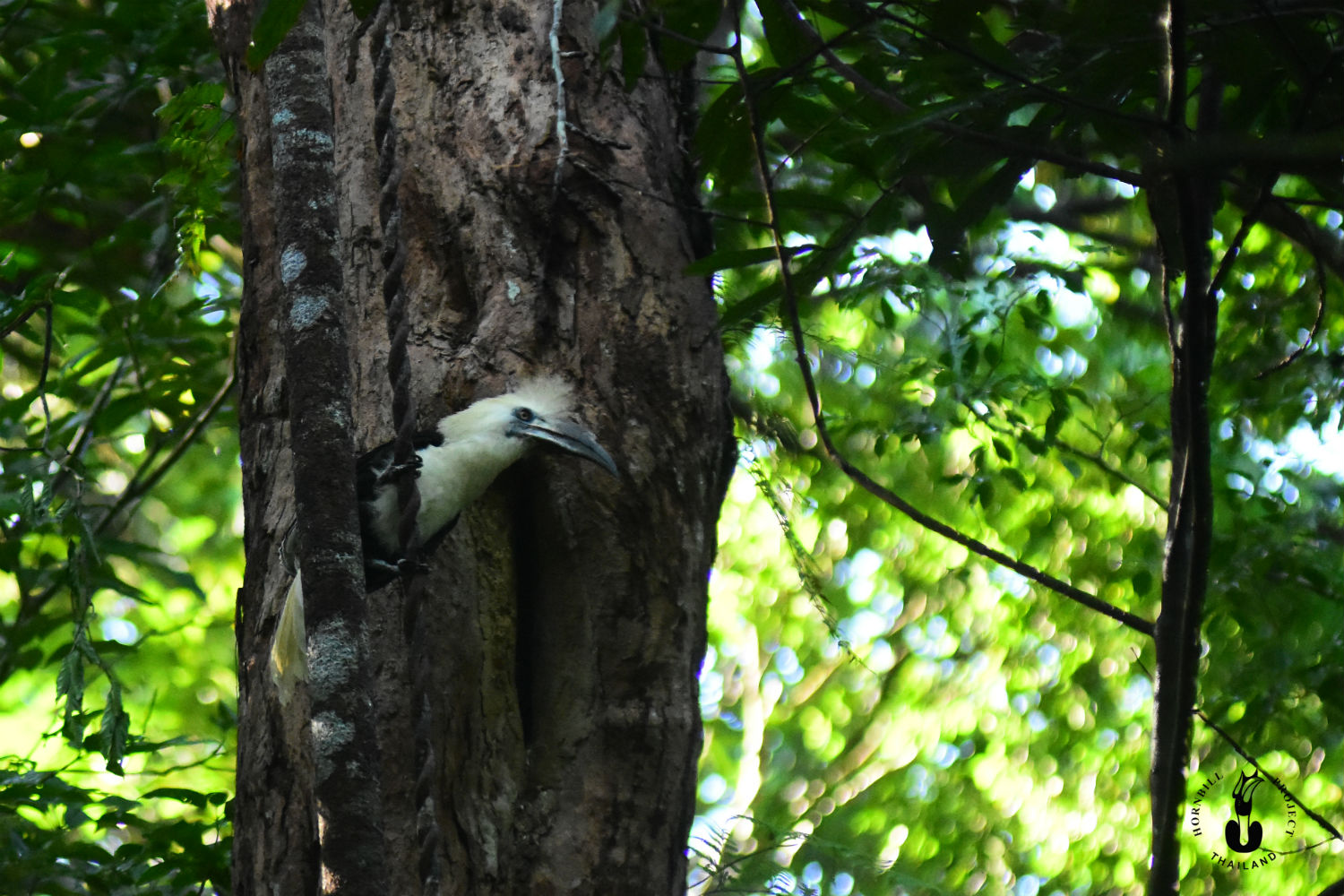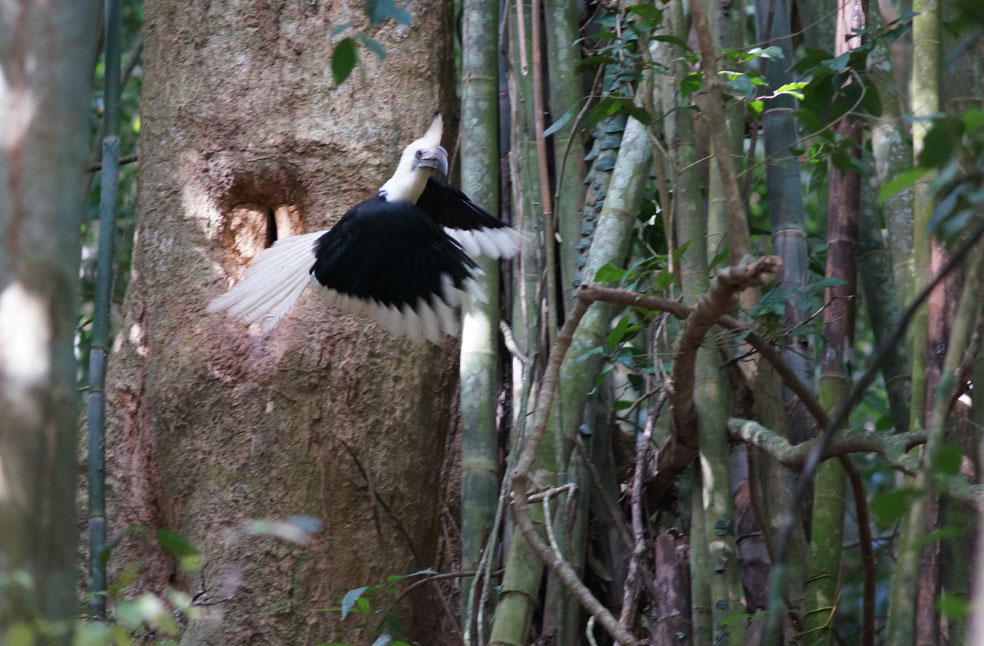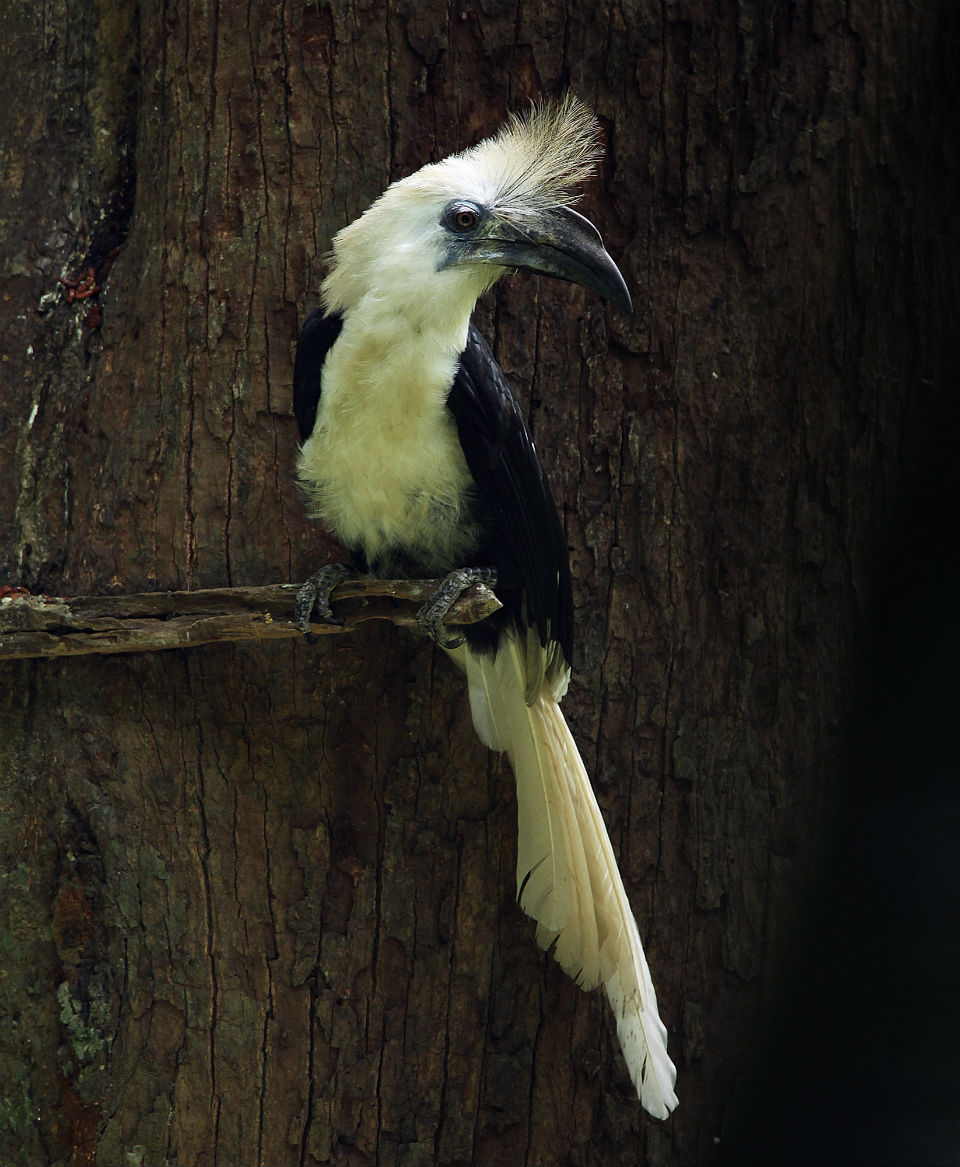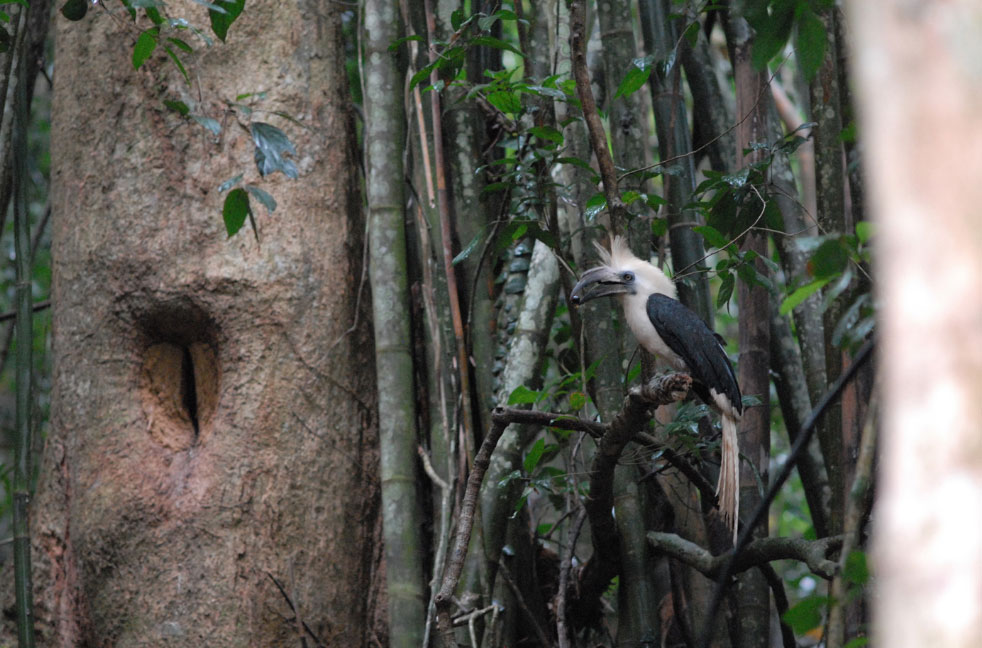Found in large expanses of primary rainforest; extends into adjacent closed secondary forest and riverine areas, also recorded in nearby cultivation.
Mainly in the lowlands, up to 900 m elevation, recorded to 1,680 m. It is a shy and unobtrusive bird that stays hidden inside the canopy of large trees. It rarely flies high above the forest; instead it flips from tree to tree on short flights at canopy level. The diet has a large proportion of animal food; it actively hunts in the trees, probing the bark and vines for prey and even drops down to the ground regularly.
The prey is insects, snakes, lizards and small bird’s chicks and eggs, mice. It also takes fruits, mainly lipid-rich drupes and capsules, also some figs, In southern Thailand fruit food, other than figs, includes Oncosperma horridum (Arecaceae), Litsea spp (Lauracaea), Aglaia spectabilis, Chisocheton ceramicus (Meliaceae), Horsfieldia tomentosa and Myristica elliptica (Myristicaceae) and Sterculia sp (Sterculiaceae).
It is apparently sedentary and territorial, but somewhat social with co-operative activities reported during breeding. Surveys found that the home range is small, only some 1-10 km2



